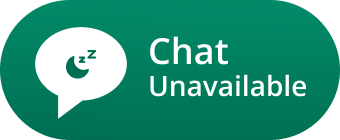
How to balance your checkbook with paperless, online accounts
An important part of staying on top of your financial status is balancing your checkbook. Although this practice may seem outdated, it’s still wise to verify your monthly account statements.
However, the traditional practice of “balancing your checkbook” has become outdated. Rarely does anyone verify each transaction on their handwritten check register with the paper statement sent in the mail. So how are you supposed to balance a checkbook in this age of digital banking and online accounts?
Why balancing a checkbook is still relevant
Conveniences like automatic bill payments, debit cards, paperless e-statements, and digital wallet apps have replaced the act of balancing a checkbook by hand. Yet there are many reasons that you should still perform this ritual every month.
Bankrate writer Karen Bennett defines balancing a checkbook as simply verifying that all deposits and withdrawals on your checking account over the past month add up to what they should be. She lists a handful of reasons why it’s still worth taking the time to do this, including being able to:
- Spot fraudulent charges.
- Avoid overdrafts.
- Monitor your spending habits.
- Identify unexpected bank fees.
- Catch mistakes.
- Verify that automatic payments are occurring.
For these reasons, you should still take the time to reconcile each month’s financial transactions. But how should you do that if you don’t receive paper activity statements in the mail anymore or use an old-fashioned checkbook register?
What you’ll need
A crucial resource for doing this is a means of displaying and sorting all the data. There are two ways of approaching this: a spreadsheet or an automated app. Following a spreadsheet, you can write out all of the numbers by hand with pen and paper, or you can type it on the computer using digital workbooks like Microsoft Excel.
For tech-savvy spenders, a phone app has major appeal. It saves you time by conveniently automating the process and logging your transactions when it’s paired to your financial accounts. The most popular apps for cash flow tracking and verification are Mint, HomeBudget with Sync, Balance My Checkbook, Volkron Checkbook, Checkbook Plus, PocketMoney, and WalletWhiz.
How to square your records
With the right tools, balancing your checkbook is quite simple — especially as it’s outlined plainly by Walli Miller of Clever Girl Finance.
Begin by noting the current balance on your savings account and/or credit card at the beginning of the period. You’ll need this amount to track the difference as it changes throughout the month and verify that the final number matches the end-of-period statement.
Then, retrieve your transaction history. This includes all checks you’ve written, credit and debit card transactions, cash withdrawals, deposits, and any other changes. Most of these you can retrieve online by logging into your corresponding accounts.
Now, compare those transactions to your monthly account statement from the financial institution. Verify that each transaction is accounted for, taking considerations like interest accrued and automatic bill payments into consideration. If the numbers don’t match, investigate what’s off so you can resolve the discrepancy.
Tracking expenses
Verifying your financial records is much easier if you keep track of your transactions throughout the month. That’s why Vivian Wagner of Intuit’s MintLife advises to retain all receipts from purchases and keep a written or digital log of checks written and other balance modifications. Instead of stuffing your wallet full of paper receipts, opt for emailed or texted digital receipts instead. You’ll never lose them, and you’re helping save trees!
While balancing a checkbook isn’t exactly the same as what it used to be, the general idea remains the same: It’s important to always double-check your accounts.
The information in this article was obtained from various sources not associated with Adirondack Bank. While we believe it to be reliable and accurate, we do not warrant the accuracy or reliability of the information. Adirondack Bank is not responsible for, and does not endorse or approve, either implicitly or explicitly, the information provided or the content of any third-party sites that might be hyperlinked from this page. The information is not intended to replace manuals, instructions or information provided by a manufacturer or the advice of a qualified professional, or to affect coverage under any applicable insurance policy. These suggestions are not a complete list of every loss control measure. Adirondack Bank makes no guarantees of results from use of this information.
Source: IMakeNews, Inc.

